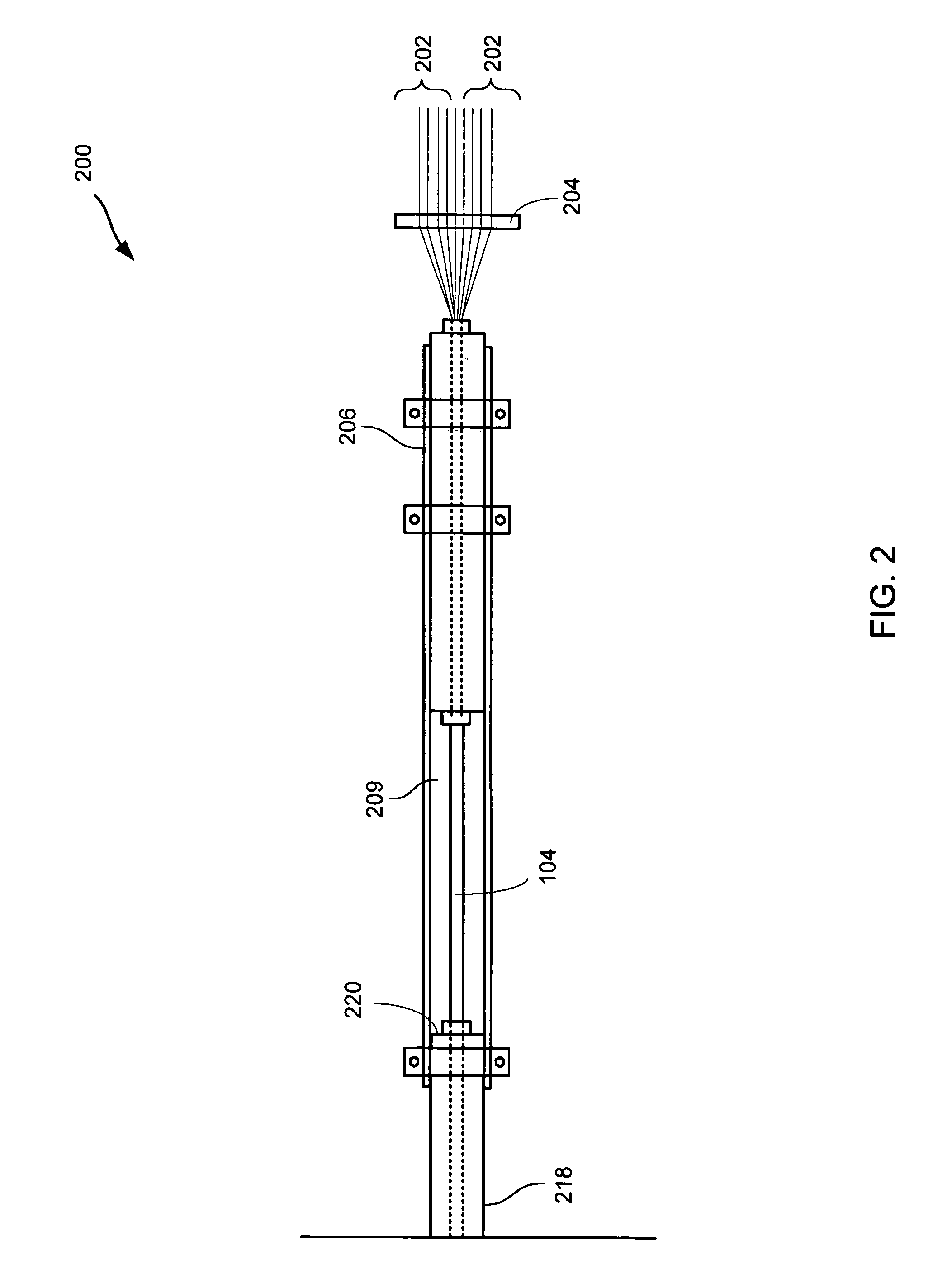Aluminum conductor composite core reinforced cable and method of manufacture
a technology of aluminum conductors and composite cores, applied in the field of aluminum conductor composite core reinforced cables and methods of manufacture, can solve the problems of acsr cables suffering from thermal expansion and a reduction in tensile strength, coiled sag below permissible levels, and excessive line sag
- Summary
- Abstract
- Description
- Claims
- Application Information
AI Technical Summary
Benefits of technology
Problems solved by technology
Method used
Image
Examples
example
[0036] A particular example embodiment of the invention is now described wherein the composite strength member comprises S-2 glass. It is to be understood that the example is only one embodiment of the invention and it is not meant to limit the invention to this one embodiment. It is noted that one skilled in the art will recognize other equivalent embodiments. An example of an S-2 glass is S-2 Glass roving by AGY Corporation, the specifications of which are set forth in the brochure, “Advanced Materials—Solutions for Demanding Applications”, Pub. No. LIT-2004-341 (03 / 04), which may be found at www.agy.com, the contents of which are incorporated by reference herein. Compared to Aramid and carbon fiber, S-2 Glass fiber offers enhanced high performance properties at a lower cost. Moreover, the caternary-free, single-end roving construction of ZenTron fiber for example, translates into more efficient processing for composites that are pultruded. A typical fiber roving diameter ranges f...
PUM
| Property | Measurement | Unit |
|---|---|---|
| speed | aaaaa | aaaaa |
| length | aaaaa | aaaaa |
| length | aaaaa | aaaaa |
Abstract
Description
Claims
Application Information
 Login to View More
Login to View More - R&D
- Intellectual Property
- Life Sciences
- Materials
- Tech Scout
- Unparalleled Data Quality
- Higher Quality Content
- 60% Fewer Hallucinations
Browse by: Latest US Patents, China's latest patents, Technical Efficacy Thesaurus, Application Domain, Technology Topic, Popular Technical Reports.
© 2025 PatSnap. All rights reserved.Legal|Privacy policy|Modern Slavery Act Transparency Statement|Sitemap|About US| Contact US: help@patsnap.com



